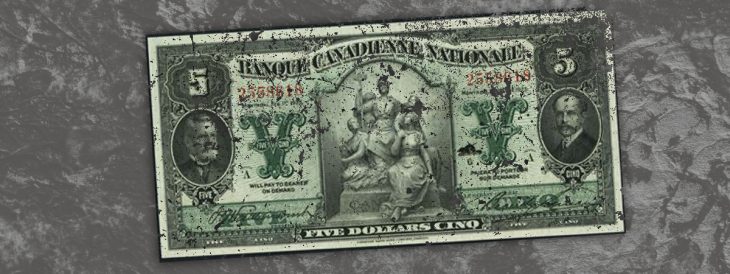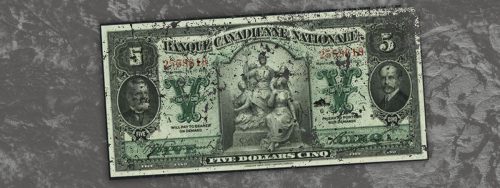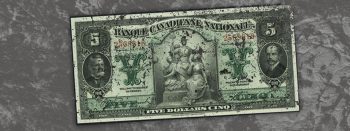Last updated on May 2nd, 2024 at 03:36 pm
Last Updated on May 2, 2024 Posted by Colonial Acres Coins
Throughout its history, Canadian paper money has had numerous forms, shapes, colours, and sizes. Currently, Canadian dollars are issued in $5, $10, $20, $50 and $100 paper denominations. Current notes are issued by the Bank of Canada, with its first series of notes going back as far as 1935. However, before the current series of polymer banknotes that are u
sed today, there have been numerous iterations throughout history.
British Army notes were the first paper money issued in Canada denominated in dollars. Ranging in denominations from $1 to $400, they were emergency issues due to the War of 1812 and were in circulation between 1813 and 1815. However, it was the Montreal Bank that issued the first banknotes in 1817. The history of Canadian paper money can be briefly observed through the following stages:
- Chartered banks
- Colonial governments
- Government of Canada
- Other public issuers
- Bank of Canada
Chartered Banks
Paper money in Canada was issued by many chartered banks only for a short time. Contrary to such practice, the Montreal Bank (later Bank of Montreal) continued issuing notes for a number of decades. Many chartered banks were founded in the 1830s, ‘50s, ‘60s, and ‘70s. Until 1858, a large number of different denominations existed: $1, $2, $3, $4, $5, $10, $20, $25, $40, $50, $100, $500, $750 and $1,000. Also
, many notes were issued in both dollars and shillings/pounds. However, only dollar denominations were used after 1858.
Colonial Governments
Governments of Prince Edward Island, Nova Scotia, Canada and British Columbia all issued dollar-denominated notes prior to the Canadian Confederation. The most prolific issuer of Canadian paper money of these was the Province of Canada, established in 1841. The Bank of Montreal produced the notes for the government between 1842 and 1862. However, the Province of Canada started issuing its own paper money in 1866 in denominations of $1, $2, $5, $10, $20, $50, $100 and $500.
Government of Canada
Province of Canada notes served as the Dominion of Canada’s first national currency for a temporary period following confederation in 1867. Interestingly, the Dominion of Canada issued special notes called Bank Legals only to banks for transferring large sums of money. These were issued in denominations of $500, $1,000, $5,000 and $50,000. After the establishment of the Bank of Canada in 1935, however, the issuance of all Dominion notes was brought to an end.
Other Public Issuers
When talking about the history of paper money in Canada, it needs to be said that dollar-denominated notes were also issued by some municipalities. This was mostly done during the Great Depression. In an attempt to alleviate the effects of the Great Depression on local citizens, depression scrip was issued during the 1930s. Additionally, the issuing of prosperity certificates in 1936 marked the launching of a similar scheme by the province of Alberta.
Bank of Canada
The Bank of Canada was founded in 1934 when there were only ten chartered banks left that were still issuing notes. That is when the Bank of Canada started issuing notes in the following denominations: $1, $2, $5, $10, $20, $25, $50, $100, $500 and $1,000. Since 1944, however, the Bank of Canada has remained as the only issuer of paper money in Canada.




